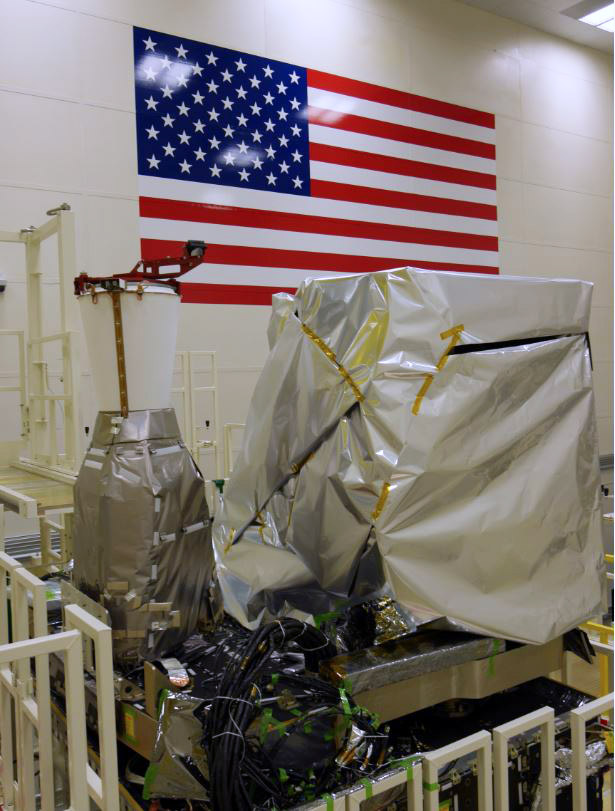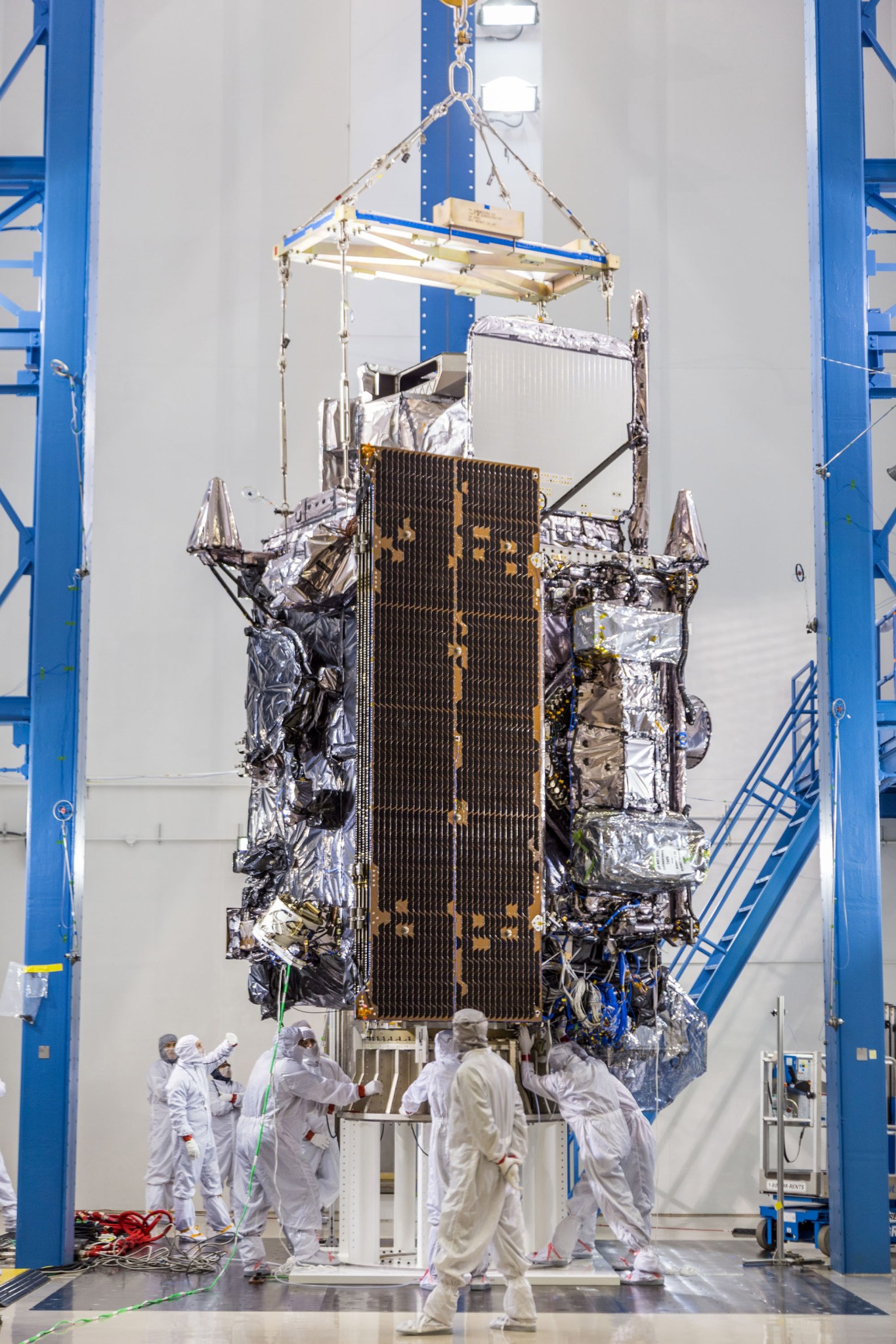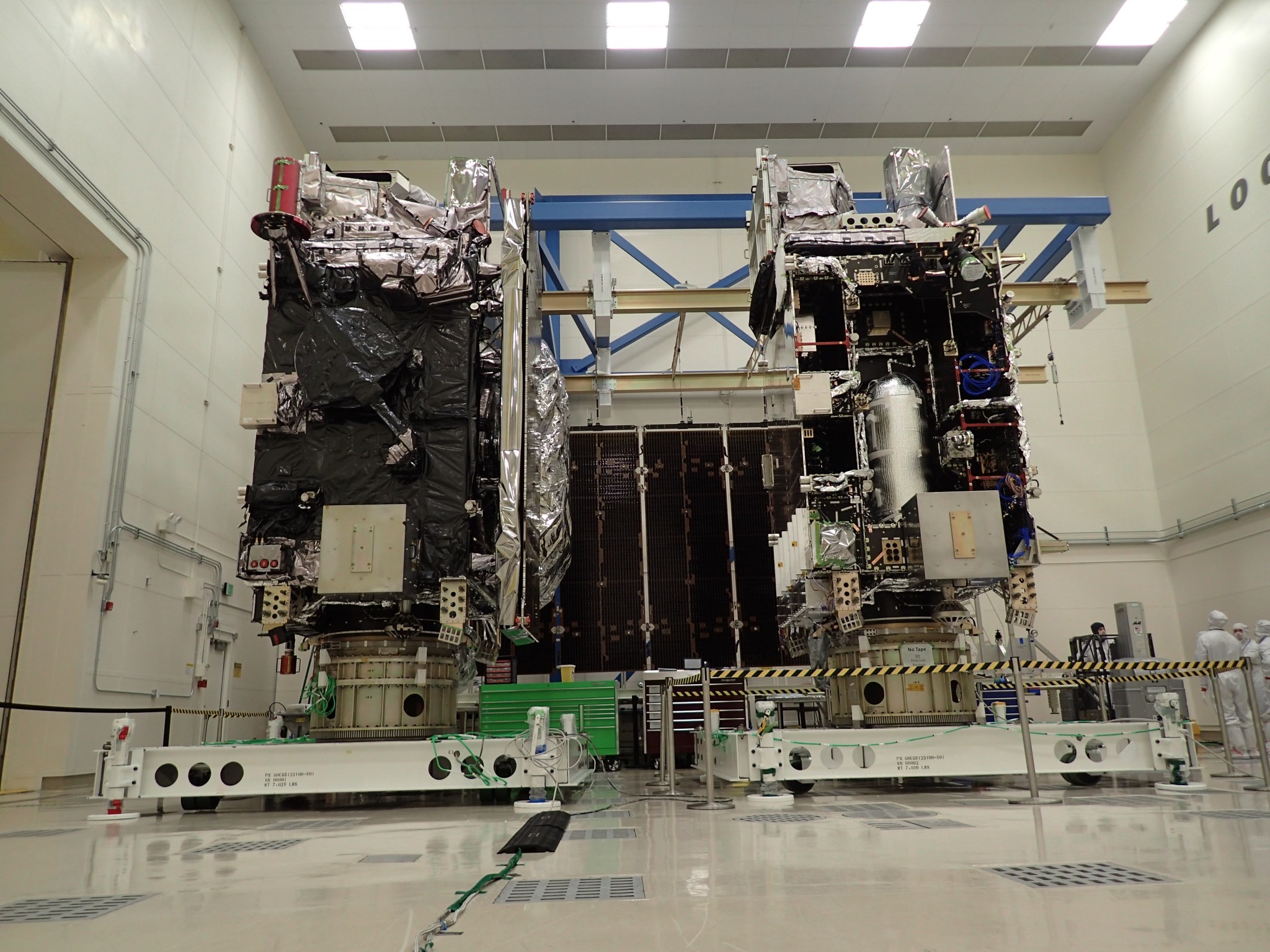Following the successful launch of GOES-R, renamed GOES-16 upon reaching geostationary orbit, progress continues on development of the GOES-S spacecraft. The Geostationary Operational Environmental Satellite or GOES-S is now fully integrated and undergoing environmental testing.
During environmental testing, the satellite is subjected to conditions which simulate launch and the harsh space environment in orbit. This includes vibration testing to simulate the stresses experienced during launch to ensure there are no structural weaknesses, and acoustics testing, which uses high-intensity horns to subject the satellite to extreme high sound pressure that simulates the noises created when the rocket is launched. In addition, GOES-S will go through electromagnetic testing to ensure that the electromagnetic signals produced by satellite components do not interfere with its operation and even further testing that subjects the satellite to extreme thermal temperatures in a vacuum chamber.
This environmental testing is taking place at Lockheed Martin Corporation’s Littleton, Colorado, facility, where the spacecraft was built. GOES-S recently completed acoustics and vibration testing. The full set of environmental, mechanical and electromagnetic testing will take about one year to complete.
“There is so much excitement surrounding GOES-16 but we’re also making great progress on the remaining satellites in the GOES-R Series,” said GOES-R Series System Program Director Greg Mandt at the GOES-R Series Program Office, located at NASA’s Goddard Space Flight Center in Greenbelt, Maryland. “GOES-S is now transitioning from the development and integration phase to the final testing that will prepare it to join GOES-16 in space, giving the nation two next-generation geostationary weather satellites to watch over the Western Hemisphere.”
Meanwhile, GOES-16 has been placed in a central checkout orbit of 89.5 degrees west longitude, where it is undergoing post-launch testing, followed by an extended validation phase and arriving at its operational location approximately one year after launch. GOES-S will join GOES-16 in geostationary orbit in mid-2018 and be designated GOES-17.
The GOES-R satellite series consists of GOES-R, GOES-S, GOES-T and GOES-U. This series is more advanced than the current GOES fleet in that the satellites can scan the Earth five times faster, at four times the image resolution, with triple the number of channels for more accurate, reliable weather forecasts and severe weather outlooks. They will also provide critical solar monitoring and space weather observations.
GOES-R series satellites overview video: https://youtu.be/6Q7Leqvzfg4
For more information about GOES-R, visit: http://www.goes-r.gov/
For more information about NASA/NOAA’s GOES Project, visit:


























